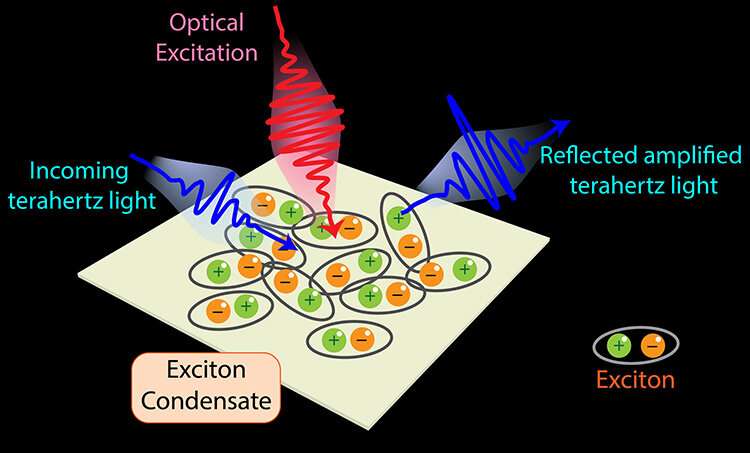This article has been reviewed according to Science X's editorial process and policies. Editors have highlighted the following attributes while ensuring the content's credibility:
fact-checked
peer-reviewed publication
trusted source
proofread
Shining a light on the hidden properties of quantum materials

Certain materials have desirable properties that are hidden, and just as you would use a flashlight to see in the dark, scientists can use light to uncover these properties.
Researchers at the University of California San Diego have used an advanced optical technique to learn more about a quantum material called Ta2NiSe5 (TNS). Their work appears in Nature Materials.
Materials can be perturbed through different external stimuli, often with changes in temperature or pressure; however, because light is the fastest thing in the universe, materials will respond very quickly to optical stimuli, revealing properties that would otherwise remain hidden.
"In essence, we shine a laser on a material and it's like stop-action photography where we can incrementally follow a certain property of that material," said Professor of Physics Richard Averitt, who led the research and is one of the paper's authors. "By looking at how constituent particles move around in that system, we can tease out these properties that are really tricky to find otherwise."
The experiment was conducted by lead author Sheikh Rubaiat Ul Haque, who graduated from UC San Diego in 2023 and is now a postdoctoral scholar at Stanford University. He, along with Yuan Zhang, another graduate student in Averitt's lab, improved upon a technique called terahertz time-domain spectroscopy. This technique allows scientists to measure a material's properties over a range of frequencies, and Haque's improvements allowed them access to a broader range of frequencies.
The work was based on a theory created by another of the paper's authors, Eugene Demler, a professor at ETH Zürich. Demler and his graduate student Marios Michael developed the idea that when certain quantum materials are excited by light, they may turn into a medium that amplifies terahertz frequency light. This led Haque and colleagues to look closely into the optical properties of TNS.
When an electron is excited to a higher level by a photon, it leaves behind a hole. If the electron and hole are bound, an exciton is created. Excitons may also form a condensate—a state that occurs when particles come together and behave as a single entity.
Using Haque's technique, backed by Demler's theory and using density functional calculations by Angel Rubio's group at the Max Planck Institute for the Structure and Dynamics of Matter, the team was able to observe anomalous terahertz light amplification, which uncovered some of the hidden properties of the TNS exciton condensate.
Condensates are a well-defined quantum state and using this spectroscopic technique could allow some of their quantum properties to be imprinted onto light. This may have implications in the emerging field of entangled light sources (where multiple light sources have interconnected properties) utilizing quantum materials.
"I think it's a wide-open area," stated Haque. "Demler's theory can be applied to a suite of other materials with nonlinear optical properties. With this technique, we can discover new light-induced phenomena that haven't been explored before."
More information: Sheikh Rubaiat Ul Haque et al, Terahertz parametric amplification as a reporter of exciton condensate dynamics, Nature Materials (2024). DOI: 10.1038/s41563-023-01755-2
Journal information: Nature Materials
Provided by University of California - San Diego



















